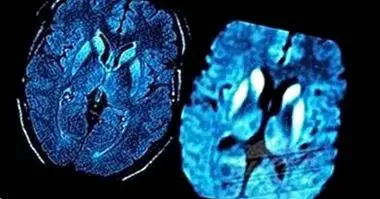Gender dysphoria: being born in the wrong body
Many people feel relatively well with their body; At most, they think they would be better with another type of hair, with more or less kilos on top, or with a more muscular body.
But nevertheless, others notice as if their identity does not fit their body because they feel of a gender that does not correspond to their biological sex . This feeling is the essence of gender dysphoria.
What is gender dysphoria?
Basically, gender dysphoria is the term used to refer to to the perceived incongruence between one's own gender identity and sex attributed to one's own body , and all the problems that result from it.
People who experience gender dysphoria perceive their own bodies as something strange, that does not belong to them, because they are of the opposite sex as they should be. This produces dissatisfaction to a degree that can vary greatly. There are people for whom gender dysphoria is little more than an annoyance to others who experience a deep discomfort for it. Also, not all transsexual people experience this psychological phenomenon.
Transsexual people with gender dysphoria they tend to need their sex and gender to be aligned according to traditional canons .
- Maybe you're interested: "5 myths about homosexuality disassembled by science"
What people experience gender dysphoria?
Gender dysphoria can appear in all kinds of people, even in childhood, when you still do not have the means to correctly express what you feel and the only way to express this tension between sex and gender is to reject the gender-charged elements that they want to inculcate and opt for those that correspond to the opposite sex.
In addition, it can appear in both men and women, although it is estimated that, at least in Spain, it is somewhat more frequent in men.
- Maybe you're interested: "Transphobia: discrimination against gender diversity"
Is gender dysphoria a disease?
The short answer to this question is that no, it is not. This is so because, despite the fact that there is still a debate on whether transsexuality can be considered a mental disorder or not, no pathological elements related to gender dysphoria have been found that link this discomfort to biological causes, but especially since gender dysphoria can also be addressed as a social and cultural problem.
According to this perspective, which avoids the pathologization of gender dysphoria, this can be explained as a product of the cultural construction of the genre: the feminine is related to emotionality and vulnerability, the masculine with the hardness and the physical violence , etc. Therefore, when there are situations in which the identity of a person does not fit with these gender roles, the situation may arise that the individual feels more identified with the gender identity that has not been assigned at birth. based on rigid biological criteria.
Thus, if gender dysphoria can be solved by modifying the culture in which people live, it is impossible for it to be a disease.
However, this does not mean that for some people the gender dysphoria is so strong that they decide to opt for surgery, that is, the medical and immediate route. In this way, one can resort to both cosmetic surgery and sex change operations, in which important structural changes are introduced. This is considered a solution that reduces stress that exists between the own identity and the social expectations imposed on the individual based on isolated biological characteristics.
Surgery in transsexuality
As the person who lives gender dysphoria notes that their identity and body are not in harmony, It is common to seek help to make these two elements become in tune .
The most common measures for this are the use of the type of clothing that is associated with gender to the biological sex to which one wants to belong and the use of hormones for certain quantitative changes to appear in the body itself: more or less facial hair, greater or less development of the musculature, etc.
Psychotherapy to solve gender dysphoria?
Of course, one can also consider the option of making one's identity fit better with the body one has, instead of physically modifying the body. But nevertheless, psychotherapy has proved ineffective in resolving the feelings of discomfort produced by gender dysphoria , so the most useful option is the modification of the body and the wardrobe.
However, this does not mean that psychotherapy is not useful when dealing with this type of problem.Specifically, psychological care can be used as preparation and accompaniment of the transition to a body with which fit the identity itself, to be able to face in good conditions the new needs and problems related to the passage to the other sex.
Bibliographic references:
- Asenjo Araque, N., García Gibert, C., Rodríguez-Molina, J. M., Becerra-Fernández, A., Lucio Pérez, M. J. (2009). Gender dysphoria in childhood and adolescence: a review of its approach, diagnosis and persistence. Journal of Clinical Psychology with Children and Adolescents, 2 (1), pp. 33-36.



















